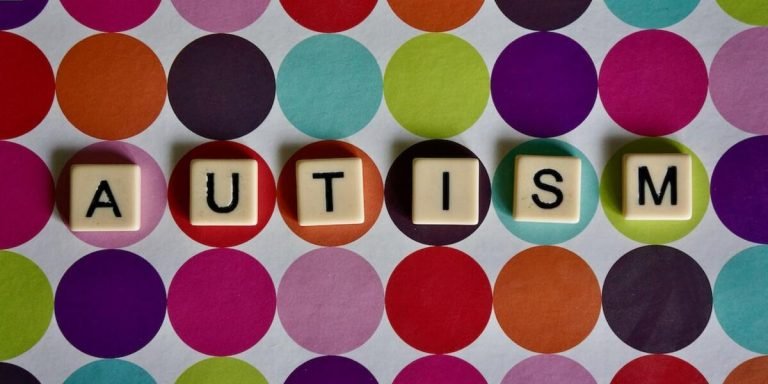Sensory Deficit: Understanding its Impact on Childhood Education
Understanding a child’s sensory deficit is paramount to successfully aiding their educational journey. A sensory deficit impacts how kids perceive and process information from the world, directly influencing their learning abilities. Such conditions pose significant challenges not only for the children grappling with them but also parents and educators tasked with providing suitable education resources and support.
In recognizing and addressing these impairments early, we can make notable strides towards improving childhood education experiences for affected youngsters significantly. This blog aims to shed light on sensory deficits – what they are, how they affect schooling processes, as well as vital special educational resources available for fostering an inclusive learning environment.
Did you know?
Surprisingly, 1 in every 20 children is affected by a sensory processing disorder (SPD), yet this condition often goes unnoticed or misunderstood within the sphere of childhood education. Despite its prevalence, SPD has only gained recognition in recent years as a distinctive condition impacting learning and behavior.
Understanding Sensory Deficit in Special Education
Understanding sensory deficit in special education requires an intricate knowledge of how the senses play a major role in children’s learning processes. Sensory deficits can greatly impact a child’s ability to receive information from their surroundings and subsequently understand or react to it. Special educators, thus, have been incorporating technology as an essential response tool for assisting learners experiencing these challenges.
For instance, assistive listening devices that amplify sounds help students with hearing impairments access educational content more effectively. Similarly, text-to-speech software aids visually impaired scholars connect better with written materials through audio feedback methods thereby fostering engagement and inclusivity during lessons.
Also noteworthy is the evolution of diverse online resources designed specifically for supporting those involved in special education – parents and teachers alike – ensuring they stay updated about best practices tailored around pressing needs like handling aspects related to sensory deficits; thanks again to relentless technological progression being observed currently.
Recognizing the Signs of Sensory Processing Issues
Learning to recognise the signs of sensory processing issues can greatly improve a child’s academic journey, especially in special education. When equipped with this knowledge, teachers and parents become more capable individuals who can provide tailored support for children experiencing such challenges. Let’s explore some common indications that may suggest a sensory deficit.
1. Sensitivity to Stimuli: Overly sensitive or under-responsive reactions towards touch, taste, smell or sounds are considered top markers of potential sensory processing problems.
2. Difficulty with Motor Skills: Children struggling with tasks like writing neatly or doing up buttons could be an indication of underlying sensory deficits.
3. Behavioral Difficulties: Watch out for unexplained tantrums or becoming upset at seemingly minor things – these might not just be regular growing pains but indicators of something deeper.
This year 2023, technology has been intrinsically integrated into our daily lives – including the field of education – making learning experiences engaging and personalized than ever before.
Special Education Resources now proudly offer state-of-the-art tech tools aimed specifically at managing symptoms associated with conditions like sensory deficiencies in students.
In conclusion , understanding both these concepts will empower you in handling specific needs better while supporting young learners on their educational path effectively.
Tailoring Learning Environments to Accommodate Sensory Needs
In the rapidly evolving landscape of special education, tailoring learning environments to accommodate sensory needs is a topic that cannot be overlooked. As we navigate through the year 2023, technology integration in education plays an instrumental role in catering to children with a sensory deficit.
Sensory deficits refer to challenges faced by individuals who struggle with processing or interpreting sensory information from their environment. This can range from sensitivity towards certain sounds, textures and sights- effectively impacting how they learn and interact within educational contexts.
Educators have increasingly leaned on technological advances for assistance here. The proliferation of specialized software applications tailored specifically for students experiencing this type of challenge makes personalized teaching approaches easier than ever before.
For instance, virtual reality-based systems are now being used as immersive therapies that help kids tune-out distractions while focusing on their tasks at hand – creating ideal conditions for effective learning despite any underlying struggles related to auditory or visual sensitivities.
Strategies for Supporting Students with Sensory Deficits
The integration of technology into education has offered a remarkable solution for supporting students with sensory deficits. Specialized software and digital resources have been developed to make learning more accessible, engaging, and effective. This innovative approach allows these children to overcome their challenges and actively participate in the educational process.
Assistive Technology (AT) plays an integral role here as it is specifically designed to meet unique needs. AT devices range from simple tactile puzzles that help shape recognition for visually impaired students, to advanced speech-to-text applications aiding those with auditory issues or communication difficulties. Especially notable are the various text-enlargement apps and screen-reading tools available today, providing solutions tailored precisely for learners battling visual impairments.
Moreover, Virtual Reality (VR) is another significant technological breakthrough supporting special education needs today. VR creates immersive learning environments which can be controlled according to each student’s individual requirements – thus allowing educators fine-tune every detail ranging from brightness levels right up through volume controls depending on whether they’re dealing primarily with sight-or hearing-related sensory deficit problems respectively.
In conclusion – thanks largely due both its flexibility plus capacity adapt quickly new situations & circumstances alike – we find ourselves now partway down path wherein tech may just prove invaluable asset helping nurture next generation toward success despite whatever obstacles might currently stand their way forward academically speaking at least!
Implementing Multi-Sensory Instructional Techniques
Implementing multi-sensory instructional techniques is a highly effective approach in addressing the needs of students with sensory deficits. It involves utilizing various teaching strategies designed to engage different senses simultaneously. As we are living in a technologically advanced era, 2023 brings forth an array of digital tools and resources that can aid this process.
Firstly, let’s look at interactive learning platforms like ABCMouse and Starfall which provide multisensory experiences by combining visuals, audio effects, movement tasks and more into one activity or lesson. These not only cater to diverse learners but also make lessons engaging for all kids irrespective of their special needs.
Lesson delivery can further be enhanced using technologies such as Augmented Reality (AR) and Virtual Reality (VR). For instance, Google Expedition allows teachers to take children on virtual field trips where they learn through immersive experiences thus overcoming any physical barriers associated with traditional school outings.
Another tool worth mentioning is Sensory App House which offers specifically developed apps promoting relaxation while stimulating visual hearing perception among other senses – ideal for kids who face difficulties dealing with regular classroom environments due to sensory processing disorders.
Even simple tech aids such as headphones can greatly assist those suffering from auditory sensitivity issues whereas speech recognition software benefits students having troubles tying words together coherently – helping them feel heard during group discussions without feeling overwhelmed by noise levels or social anxieties.
Utilizing Assistive Technologies and Resources
One exceptional method of aiding students with sensory deficit lies in integrating specialized software and hardware into their learning journey. Special education teachers are now frequently using text-to-speech or speech-to-text tools that make digital content more accessible to visually impaired or dyslexic learners.
For example, customized keyboards can alleviate difficulties faced by those who struggle with hand-eye coordination due to neurological conditions. Similarly, voice amplification devices aid hearing-impaired individuals get complete engagement during lessons without missing out any vital information.
Next comes augmented reality (AR) applications which hold immense potential when it comes to special education resources and support; they transform abstract concepts into tangible visual elements making comprehending simpler for children grappling with cognitive challenges.
Yet another effective means is leveraging online platforms specifically designed keeping the needs of special education kids at heart – examples include Boardmaker Online providing pictorial communication setups suitable for non-verbal autistic learners etcetera.
These channels offer an inclusive environment fostering interaction among peers regardless of physical capabilities thus boosting morale significantly alongside academic skillsets development.
Engaging Parents and Guardians in Managing Sensory Challenges
In recent years, understanding and managing sensory deficits in children has significantly improved with the integration of cutting-edge technology. This progress comes as a beacon of hope for parents and guardians grappling to meet the special education needs of their wards. It is paramount that they are actively engaged in this process because familiarity with these technologies can make an unprecedented difference.
The first step toward alleviating sensory challenges involves recognizing symptoms early on, which often include difficulty processing sights or sounds, balancing tasks or handling different textures. Once identified, educators utilize technological resources designed specifically for assisting youngsters with such issues to improve their learning experience.
Technology platforms now offer practical ways to monitor student’s responses to stimuli using real-time analytics. As a result, parents and guardians can use these insights where traditional methods may fall short – showing them tangible evidence related to behavioral pattern changes over time thanks to targeted interventions.
Yet another aspect where technology shines brighter is accessibility; With online repositories boasting diverse activities crafted according each child’s specific requirements – be it improving hand-eye coordination through digital video games or enhancing fine motor skills via interactive puzzles – there exists support at every corner just a few clicks away!
Indeed, engaging proactive involvement from those closest to our young learners reassures shared responsibility while fostering an environment conducive enough for tackling sensory deficits head-on!
Fostering Home-School Collaboration for Consistent Support
Fostering home-school collaboration is pivotal in managing sensory challenges for children experiencing sensory deficits. In the modern age of technology, integrating various educational technologies can play a crucial role in providing consistent support to these youngsters both at school and at home.
To begin with, educators should educate parents about what it means for their child to have a sensory deficit. This understanding forms the basis of building effective strategies using Special Education Resources and Support tools available online. Interactive webinars or virtual meetings could be held that outline not just theoretical aspects but also demonstrate practical ways to manage such conditions effectively.
Parents must be made aware of these resources since they can provide an incredible amount of help outside school hours too by complementing the teaching methods used by special educators during class hours.
Moreover, introducing technology into daily activities assists significantly in creating a thriving environment both inside and outside classrooms empowering kids overcoming their struggles resultant due to any kind of sensory deficit disorder more independently.
Bringing together teachers’ expertise & parental involvement through systematic training sessions employing technological advancements defines successful sensitizing towards SPD handling techniques – this remains key!
Providing Guidance on At-Home Activities for Sensory Integration
Sensory deficit is a common challenge many children face, affecting their learning experience. As parents and educators, understanding this issue enables us to provide better support for these youngsters.
To help manage sensory challenges at home, integrating technology into education can significantly assist. Below are reliable methods for using technology as an aid:
1. **Educational Games:** Interactive games designed specifically for kids with sensory deficits have proven successful in assisting them learn while having fun. The visual and auditory stimulation from such applications helps enhance their motor skills and focus.
3.Online Platforms For Skill Development: Websites like ABCmouse offer resources tailored towards special education needs – including activities focused on building fine-motor skills which often pose a great difficulty for children struggling with sensory issues.
4.Virtual Reality Therapy: Recent advancements in VR tech allow therapists to work through various scenarios helping those with ADHD or Autism Spectrum Disorder (ASD) master everyday tasks they previously struggled within real-life settings.
5.Assistive Listening Systems( ALS): Especially beneficial if your child has hearing problems; these systems amplify solo voices over background noise thus enabling them to concentrate more efficiently during classes.
Conclusion
In conclusion, sensory deficit can pose significant challenges in a child’s education journey. However, identifying and understanding the signs early on gives you an edge to adapt your parenting or teaching strategies appropriately. The ability of children with this condition to navigate their world effectively shouldn’t be undermined – it merely requires us all to recognize and appreciate different ways of learning.
We hope that by traversing through this blog post about sensory deficit has enlightened you more on its impact on childhood education. Remember – knowledge is power! Empower yourself by delving deeper into our website where we continually provide expert advice not only regarding educating children but also offering unparalleled support for both parents and educators alike because here at our website, we believe every child deserves a chance to shine!







